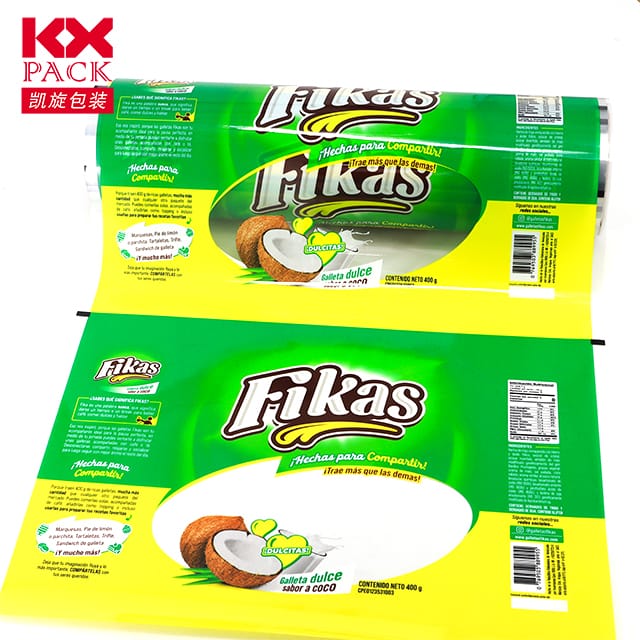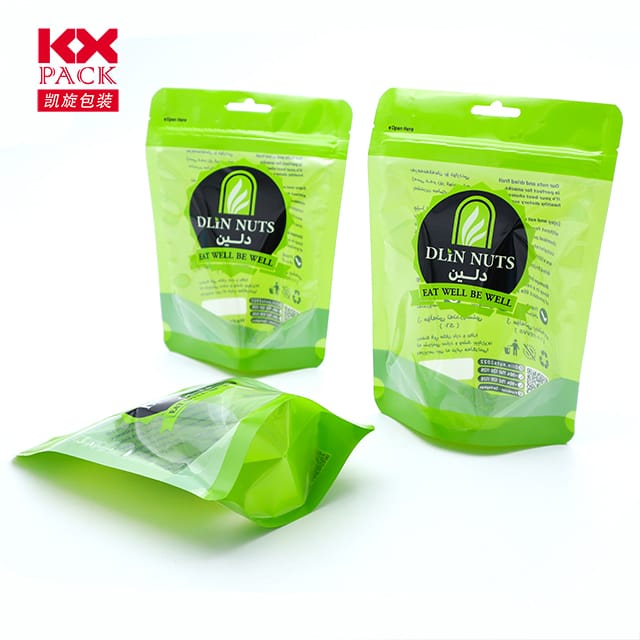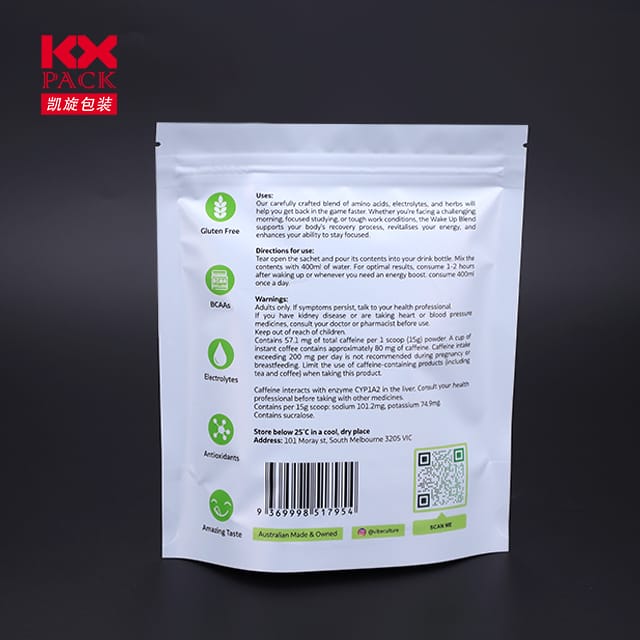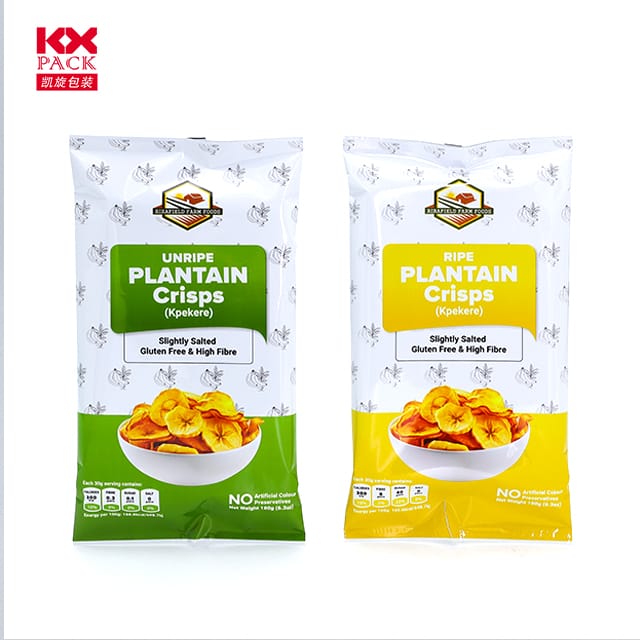นวัตกรรมและความยั่งยืนในภาพยนตร์บรรจุภัณฑ์อาหาร: ภาพรวมที่ครอบคลุม
ฟิล์มบรรจุภัณฑ์อาหาร
ในภูมิทัศน์แบบไดนามิกของอุตสาหกรรมอาหาร, ภาพยนตร์บรรจุภัณฑ์อาหารมีบทบาทสำคัญในการสร้างความมั่นใจในความปลอดภัยของอาหาร, คุณภาพ, และอายุยืน. ภาพยนตร์เหล่านี้ไม่เพียง แต่ปกป้องอาหารจากสารปนเปื้อนภายนอกเท่านั้น, ลดของเสีย, และปรับปรุงการอุทธรณ์ของผู้บริโภค. เนื่องจากความต้องการทั่วโลกสำหรับโซลูชั่นบรรจุภัณฑ์ที่ยั่งยืนและมีประสิทธิภาพสูงยังคงเติบโตอย่างต่อเนื่อง, ภาพยนตร์เรื่องบรรจุภัณฑ์อาหารเป็นพยานนวัตกรรมที่น่าทึ่ง.
ภาพรวมตลาดและแนวโน้มการเติบโต
ตลาดฟิล์ม Food Food Soft กำลังประสบกับการเติบโตที่แข็งแกร่ง, ขับเคลื่อนด้วยการเพิ่มการรับรู้ของผู้บริโภคเกี่ยวกับความปลอดภัยของอาหาร, ความยั่งยืนด้านสิ่งแวดล้อม, และความต้องการที่สะดวก, อาหารพร้อมกิน. ตามรายงานล่าสุดโดย Qyresearch, ขนาดตลาดภาพยนตร์ Soft Film Global Soft มีขนาดประมาณ 35,817.3MILLฉันโอn2023หนึ่งงฉันSPROJECTจงTแร่กคชม.51,968.8 ล้านโดย 2030, ด้วยอัตราการเติบโตต่อปี (cagr) ของ 6.4%. การเติบโตนี้มีสาเหตุมาจากปัจจัยหลายประการ, รวมถึงความนิยมที่เพิ่มขึ้นของอาหารสดและแปรรูปน้อยที่สุด, ความก้าวหน้าในเทคโนโลยีบรรจุภัณฑ์, และกฎระเบียบด้านความปลอดภัยของอาหารที่เข้มงวด.
โพลีเอทิลีน (วิชาพลศึกษา) ปัจจุบันครองตลาด, บัญชีสำหรับรอบ ๆ 31.7% ของส่วนแบ่งทั้งหมด, เนื่องจากคุณสมบัติทางกายภาพที่ยอดเยี่ยม, ความเสถียรทางเคมี, และความคุ้มค่า. โพลีโพรพีลีน (PP) และโพลีเอทิลีนเทเรฟทาเลต (สัตว์เลี้ยง) ยังเป็นผู้เล่นที่สำคัญ, ด้วยการเพิ่มการยอมรับในการใช้งานบรรจุภัณฑ์อาหารต่างๆ.
ประเภทของฟิล์มบรรจุภัณฑ์อาหาร
1. ฟิล์มพลาสติกแบบดั้งเดิม
ฟิล์ม PE และ PVC มีการใช้กันอย่างแพร่หลายในอุตสาหกรรมบรรจุภัณฑ์อาหาร. ภาพยนตร์ PE เป็นที่รู้จักกันดีในเรื่องความยืดหยุ่น, ความต้านทานสารเคมี, และความเป็นมิตรต่อสิ่งแวดล้อม. พวกเขามักใช้ในการบรรจุผลไม้, ผัก, เนื้อสัตว์, และขนมปัง, ให้คุณสมบัติความชื้นและออกซิเจนที่มีประสิทธิภาพ. ฟิล์มพีวีซี, ในทางกลับกัน, ให้ความโปร่งใสสูง, ความแข็งแรงเชิงกล, และความสามารถในการประมวลผลที่ยอดเยี่ยม, ทำให้เหมาะสำหรับการอนุรักษ์และครอบคลุมอาหารระยะสั้น.
2. ภาพยนตร์ที่ย่อยสลายได้และสีเขียว
เพื่อตอบสนองต่อความกังวลด้านสิ่งแวดล้อมที่เพิ่มขึ้น, the development of biodegradable and green packaging films has gained significant traction. These films are derived from renewable resources such as polysaccharides, proteins, and synthetic aliphatic polyesters, offering a sustainable alternative to traditional petroleum-based plastics. Non-solvent phase inversion (NIPS) and electrospinning techniques have emerged as promising methods for fabricating biopolymer-based films with enhanced barrier properties and mechanical strength.
Innovations in Food Packaging Films
1. Multilayer Co-extrusion Technology
Multilayer co-extrusion technology allows the combination of different polymers to create films with tailored properties. เช่น, a core layer of ethylene-vinyl alcohol copolymer (อีโวห์) can be sandwiched between two outer layers of ethylene propylene terpolymer (EPT), providing excellent oxygen barrier performance while maintaining optical clarity and shrink properties. This technology is particularly useful in packaging perishable foods, where extended shelf life is critical.
2. Nanotechnology Integration
The incorporation of nanofillers, such as silver nanoparticles (AgNPs), titanium dioxide (TiO2), and chitosan, into biopolymer matrices has revolutionized the functional properties of food packaging films. These nanofillers enhance mechanical, optical, thermal, and barrier properties, while also imparting antimicrobial and antioxidant effects. ตัวอย่างเช่น, AgNPs have been shown to effectively inhibit the growth of bacteria and fungi, ลดความเสี่ยงของการเน่าเสียของอาหารและการปนเปื้อน.
3. Smart Packaging Films
Smart packaging films integrate advanced technologies to provide real-time information about food quality and safety. These films can monitor parameters such as temperature, ความชื้น, and gas composition, alerting consumers to potential spoilage or contamination. เช่น, time-temperature indicators (TTIs) and gas sensors can be embedded into packaging films to track the freshness of perishable foods during storage and transportation.
Challenges and Future Directions
Despite the numerous advancements in food packaging films, several challenges remain. The high cost of biodegradable materials and the limited scalability of production processes pose significant barriers to widespread adoption. นอกจากนี้, the safety and regulatory compliance of nanofiller-based films require further investigation to ensure consumer trust and market acceptance.
มองไปข้างหน้า, the future of food packaging films lies in the development of sustainable, multifunctional, and intelligent packaging solutions. Researchers are exploring novel biopolymers, such as polyhydroxyalkanoates (PHAs) and polylactic acid (ปลา), as well as innovative processing techniques to enhance the performance and affordability of green packaging materials. นอกจากนี้, the integration of circular economy principles, such as recycling and composting, will be crucial in reducing the environmental impact of food packaging waste.
สรุปแล้ว, food packaging films are at the forefront of innovation in the food industry, driving advancements in food safety, คุณภาพ, และความยั่งยืน. As the market continues to evolve, the development of high-performance, eco-friendly packaging solutions will be essential in meeting the changing needs of consumers and the environment. By embracing new technologies and materials, the food packaging industry can pave the way for a more sustainable and resilient future.






